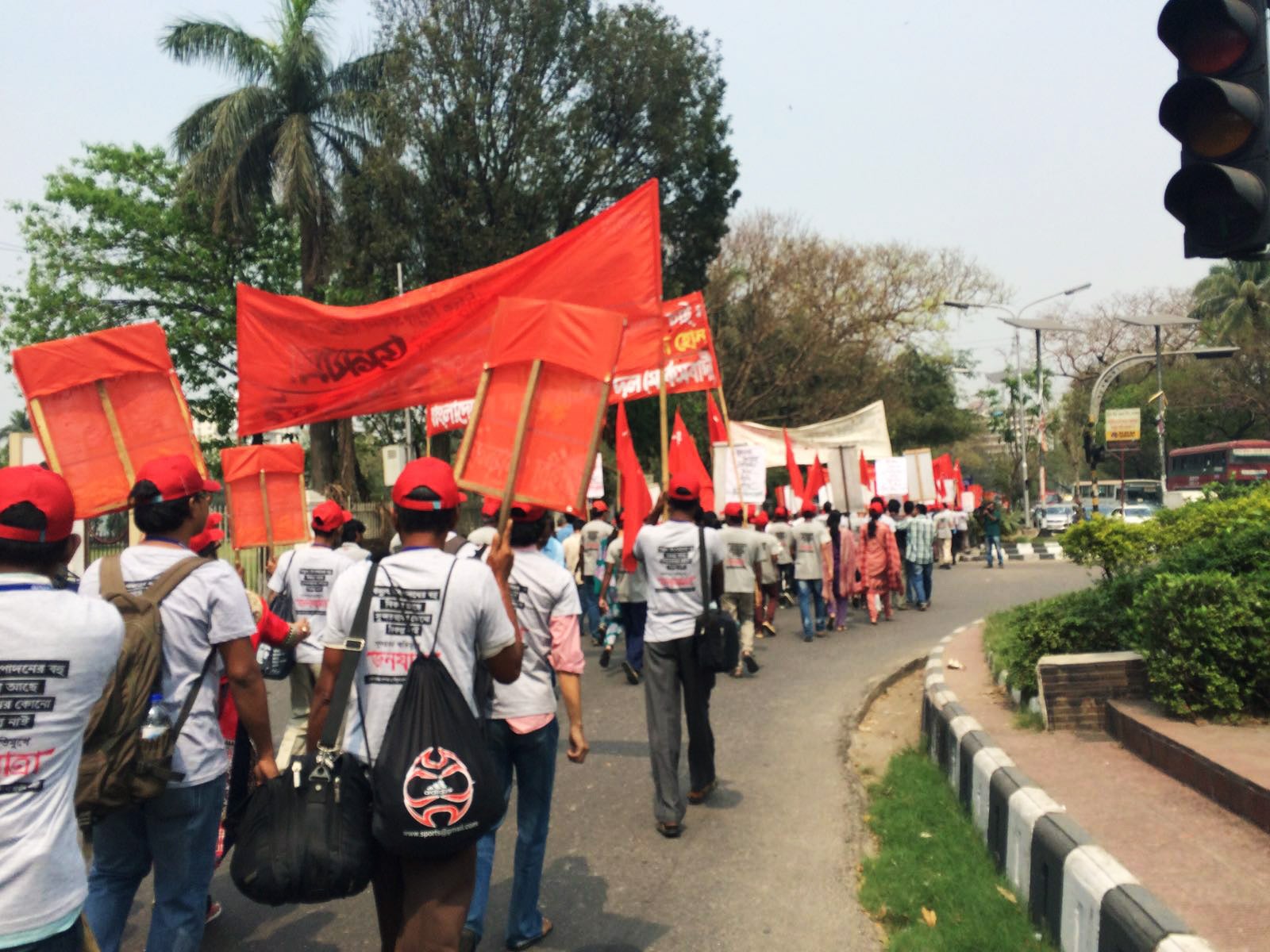Environmental Defenders Are Under Threat in Bangladesh
As Bangladeshis step up their efforts to stop a harmful coal-fired power plant, the government is clamping down on their human rights.

This page was published 9 years ago. Find the latest on Earthjustice’s work.
Editor’s note: From November 24 to 26, 2016, more than 10,000 people from across Bangladesh marched peacefully to the capital city of Dhaka with songs, dances, puppets and costumes to demand cancellation of the Rampal coal plant. Human rights observers are heartened that the government of Bangladesh respected the rights of the marchers. For photos of the beautiful procession and accompanying rally, check out this page.
On November 26, while Americans celebrate Thanksgiving, more than 1,000 Bangladeshis are expected to participate in a “Long March” against coal. The protesters will walk more than 200 miles to the capital of Dhaka to demand that the governments of India and Bangladesh cancel the proposed Rampal coal-fired power plant—a massive project planned for the edge of the Sundarbans, the world’s largest mangrove forest. The Sundarbans is a precious ecosystem, teeming with life and providing millions of people with healthy food and protection from deadly cyclones. It is also the largest remaining habitat for the area’s endangered—and beloved—Bengal tigers. For these reasons, parts of it have been designated a World Heritage site.
Concerned community members are increasing pressure on government officials in Bangladesh to cancel the project. For months, protest letters, articles and demonstrations in both Bangladesh and India have called on the government to abandon the project. In early October, several prominent scientists issued opinions that outlined the threats of air and water pollution that the power plant would pose to the Sundarbans. Soon after, a report by the United Nations World Heritage Centre and the International Union for the Conservation of Nature’s World Heritage Programme recommended that the proposed coal plant be relocated to prevent harm to the Sundarbans. The same month, several prominent Indian organizations sent an open letter to the prime minister of India urging him to withdraw support for the project. A recent petition from avaaz.org calling for the plant’s financial backers to pull out of the project has almost one million signatories.
The growing pressure has led to a forceful government pushback, including a campaign of threats and harassment. The government of Bangladesh has portrayed activists opposing the plant as terrorists, unlawfully detaining them and calling on the public to attack them. Prominent Rampal opposition figures have even received anonymous death threats.
On October 26, the National Committee for Saving the Sundarbans (NCSS), which represents 53 Bangladeshi civil society organizations, wrote to independent human rights monitors appointed by the United Nations. They highlighted a long list of the government’s human rights abuses over the past four months and requested urgent intervention. Examples included:
- In a press conference, Bangladesh’s Prime Minister Sheikh Hasina portrayed Rampal critics as violent terrorists, stating: “I don’t see any difference between the demonstrators against the Rampal project [and] the terrorists at the Holey Artisan cafe in Gulshan.” She added that the government is tracking international organizations that support the domestic movement to stop the Rampal plant.
- Student activist Dilip Roy was jailed for criticizing Prime Minister Hasina’s speech on Facebook. He faces up to 14 years in prison if convicted.
- Minister for Power Nasrul Hamid erroneously claimed that most Rampal protesters were linked to the outlawed, radical Islamic, anti-independence party Jamaat-e-Islami, whose leader was tried and executed earlier this year for crimes against humanity.
- Hasan Mahmud, Publicity Secretary of the Awami League, Bangladesh’s current governing party, warned that patriots might break the legs of the anti-Rampal activists if the activists go to the project area.
- A leading figure opposing the Rampal plant, Professor Anu Muhammed of Jahangirnagar University, received two anonymous death threats. The first read, “Death keeps no calendar, and Ansa[r]ullah knows no time!” (Ansarullah is a banned militant organization responsible for the murder of a dozen secular activists, bloggers and publishers in recent years.) The second threat read, “Say ‘yes’ to Rampal, otherwise you…will be hacked to death incredibly by us!” Six other prominent intellectuals who have been critical of the government received death threats from the same cell phone number.
- On October 18, Dhaka police attacked 300 peaceful Rampal protesters with tear gas shells and water cannons. At least 30 people were injured, some critically.
The government’s recent human rights track record does not bode well for the Long March protesters and others who continue their opposition to the Rampal plant. Freedom of expression and peaceful assembly are the backbone of a democratic and open society. But in Bangladesh, exercising these basic rights can lead to threats, violence, harassment and even death.
The international community must hold Bangladesh responsible for its actions. Earthjustice echoes the call from the NCSS requesting the urgent intervention of the United Nations. In an effort to ensure the safety of participants in the Long March, we also call on the international community, including human rights organizations and journalists, to monitor the Long March and immediately condemn any human rights violations committed against peaceful protesters.
The International Program partners with organizations and communities around the world to establish, strengthen, and enforce national and international legal protections for the environment and public health.